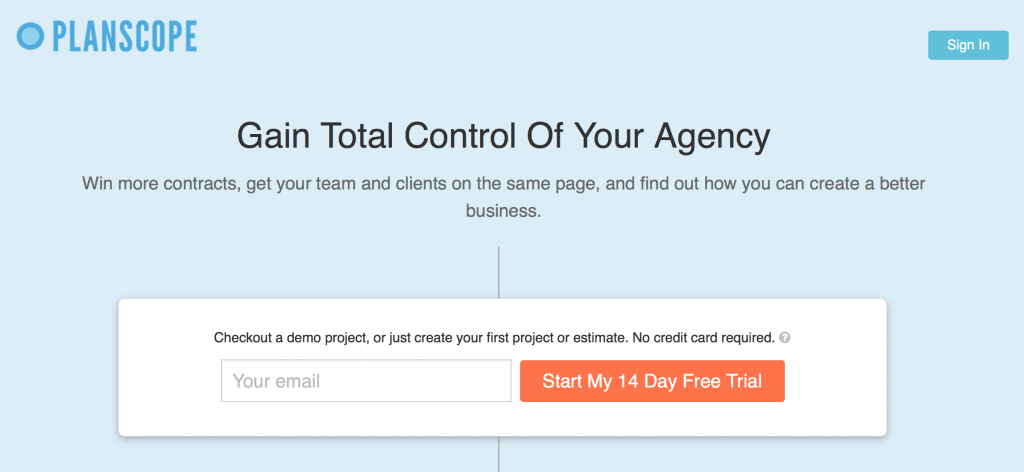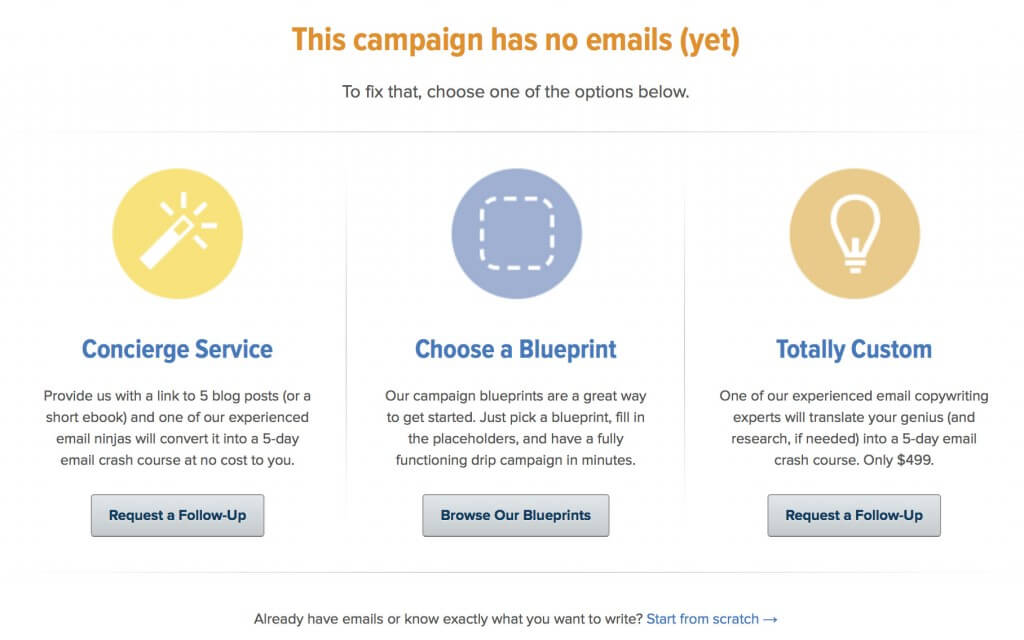Last weekend, I spent most of the weekend scrutizining what was shaping up to be the biggest update in two years to Planscope, my software-as-a-service (SaaS) startup.
And as I was working on the pricing grid and trying to come up with how I could incorporate many of the new features and services I’m working on into the plans, it hit me…
Once again, I failed to take my own pricing advice.
Since the beginning, I’ve priced Planscope based on the number of team members your account had. As your team grew, you’d pay more… but the monthly cost per team member would decrease.
Let me explain: Currently, if you’re a solo freelancer, you end up paying $24 a month — or, $24 per team member. But if you had a team of ten, your subscription would be $99 a month, or $9 per team member.
These are the sort of bulk discounts you’d expect to see when selling large amounts of commodities, like paper — buy more at once and pay less “per unit”.
But I’ve been trying to sell my product on value, and the people who stand to gain the most amount of value from my software, like agencies, were paying less. And they weren’t getting as much value as I had to offer.
Getting away from usage based pricing
Pricing software is tricky. And I think coming up with plans and trying to figure out what should go into each is even trickier.
Because it’s so hard to do this right, a lot of product creators — present company included — end up pricing by usage. Some use per seat pricing. Others will set quotas or ranges around a number of database entries (“Up to 5 projects… $XX per month”).
With this big relaunch of Planscope, I tried to come up with ways of tiering my plans that went beyond just grouping people into buckets based on how many projects, users, or whatnot they’ve setup. I wanted to charge more based on the value I was delivering through the software, which isn’t always easily correlated with records in a database.
When I help consultants package offers in their proposals, and when I come up with packages for my courses (like DYFR), I try to align the offer and the price based on how quickly and how closely the customer gets to the end goal (= why they bought.) With DYFR, the low end option is just the course book — learn the framework, and set to work experimenting on your own until it clicks with you. The high end option is the course book, videos from people of various industries who have successfully applied the framework, and a Skype session with me to get specific, personalized advice. The low end is cheaper, but results may not be as immediate; the high end is almost 10x the cost, but that end goal — a higher consulting income — typically comes faster.
So how could I apply these same principles to my SaaS? How could I let customers self-segment based on how quickly and closely they want to get to that end goal, the value proposition that I pitch front and center on the homepage, “Gain Total Control Of Your Agency”?
Beyond concierge onboarding
A big theme in the SaaS world lately has been the idea of “concierge onboarding”.
The idea is that if you can help a trial user be more successful sooner and with less work on their end (e.g., “we’ll import all of your old data, regardless of the format” or, like what my friend Andrew Culver does with ChurnBuster, “let’s walk through your code together and I’ll show you exactly where you should insert the code we need”), then that person is more likely to end up paying you.
(This is how Drip onboards new customers. I LOVE this.)
For smaller companies, being able to offer this level of service is a competitive advantage. It’s also a great way to learn about where new users of your software get stuck, and why the ended up pulling the trigger and signing up for your product.
…But most companies stop at onboarding. Once someone converts to paid, that’s it. Customers can only expect individual attention when reaching out for support.
Redoing my plans
Planscope is project planning and management software. It lets consultants estimate and manage their projects. It’s also collaboration software, so it has all the task management, commenting, and uploading features you’d expect. And finally, it includes budgeting and time tracking, which gives us a few interesting things we can report on (estimate accuracy, utilization rates, which clients are particularly nagging, etc.)
Out of the box, I think Planscope is a nice tool, and charging per-seat sort of works. Bigger teams pay more, but I could peg the per-seat price against the cost of a full-time developer or designer (which is often north of five figures a month).
But I wanted to include a lot of that sort of personalization that has proved to be so successful with my courses. If my stated goal was to help people build a more bad ass business, could I add any “soft services” that would help my customers get closer to that goal?
Here’s what I came up with so far:
- Agency-grade reporting — Each month, I’ll run a set of SQL queries that give me a bunch of data that currently isn’t represented in any of Planscope’s built-in reports. I’ll look at the data, analyze it, and create a PDF report by hand that offers stats and recommendations.
- Proposal reviews — Before sending off a proposal to a client, send it to us (which, right now, is the just me) and we’ll give you candid feedback on it and provide a few suggestions before you send it to the client.
- Setting up new clients — We’ll coach new clients of our customers on how to use Planscope to fulfill their role in collaborating on their project. Think of it as client-onboarding-as-a-service.
- Coaching and mentoring — Project management is just one piece of a big puzzle. Most of my customers come via either my newsletter or my courses, so a lot of customers already reach out with questions about pricing, lead generation, etc. (to be honest, this is how I went down the path of creating courses).
- …And a few more services
I’m betting that this will help me take Planscope beyond just project management and planning software, and to begin providing a higher level of service to my customers.
(My current pricing page. Lots of room for improvement, but you can already see how I’m starting to include these “soft services”.)
Don’t get me wrong — the software is still critical. It’s the selling point. But software can’t do everything, or at least it can’t do everything yet. In the future, I could probably automate some of this, like the reports I’ll be doing manually. For now, I’ll be able to generate these reports and get feedback in a way that doesn’t require weeks of development time. And there’s no way software will ever be able to replace a coach.
Productized consulting on top of a product
On the one hand, there’s traditional SaaS software. Someone shows up, plugs in their credit card, and pays you monthly. The only human effort required is support.
On the other hand, you have consulting. Someone has expertise, and a buyer has a problem, and that expertise is applied to that problem.
The end goals of both software and consulting are identical: to solve a particular problem (or set of problems). Most people sell one or the other.
But by finding a way to bridge the gap between turnkey software and human effort (consulting), I think a lot of software companies — especially bootstrapped companies, who need cash — can do very well for themselves and, most importantly, for their customers. A few companies do this well. Nathan Barry’s ConvertKit requires you to go through a high touch course that teaches you what you need to know about email marketing before he gives you the tools to handle your email marketing. Infusionsoft includes a 4 hour consultation that’s very focused on getting you to net a ROI as quickly as possible with each new account.
I’ve already soft launched this new model for Planscope, but I’m still toying with how exactly I’ll incorporate it into both my marketing and my trial lifecycle sequences. In a few months, I’m hoping to have an interesting case study (and some good news) to share with you!


